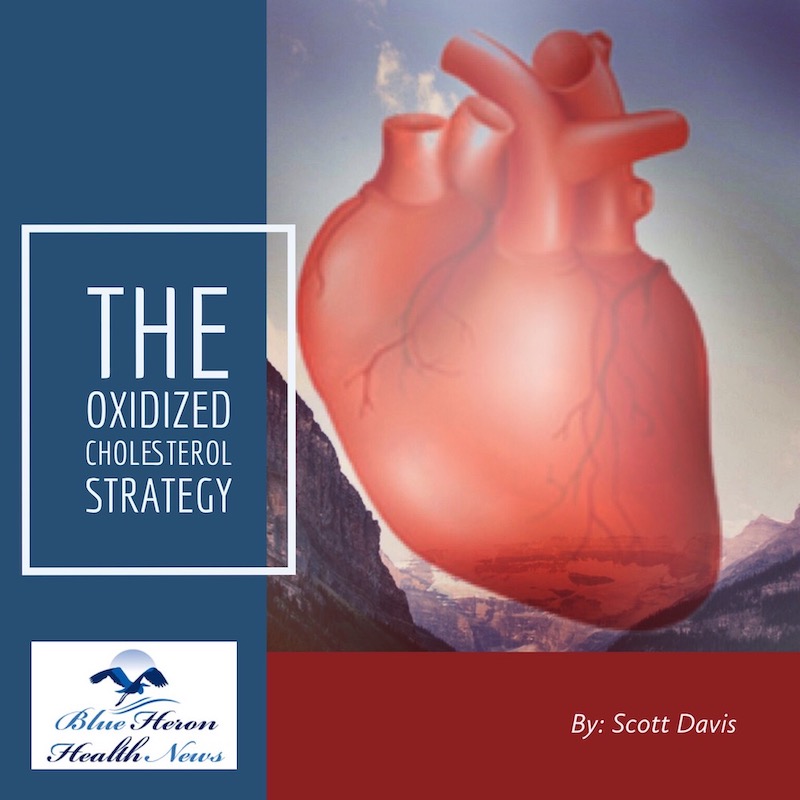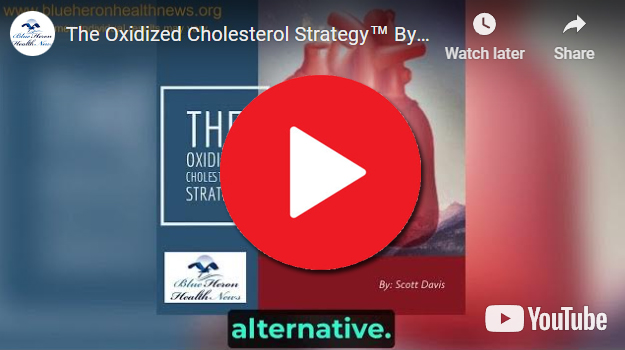
The Oxidized Cholesterol Strategy™ By Scott Davis The Oxidized Cholesterol Strategy is a well-researched program that reveals little known secret on how to tackle cholesterol plaque. This program will tell you step by step instructions on what you need to completely clean plaque buildup in your arteries so as to drop your cholesterol to healthy level.
What is the relationship between oxidized LDL and cardiovascular disease?
Oxidized low-density lipoprotein (OxLDL) plays a significant role in the development and progression of cardiovascular disease (CVD). Understanding this relationship is crucial for comprehending how CVD develops and progresses and for identifying potential therapeutic targets. Here is a detailed explanation of the relationship between oxidized LDL and cardiovascular disease:
1. Basics of LDL and Oxidized LDL
Low-Density Lipoprotein (LDL)
- Function: LDL is a type of cholesterol that transports lipids through the bloodstream to cells, where it is used for membrane structure and hormone synthesis.
- Structure: LDL particles consist of a core of cholesterol esters and triglycerides, surrounded by a shell of phospholipids, free cholesterol, and apolipoprotein B-100 (ApoB-100).
Oxidized LDL (OxLDL)
- Formation: LDL can undergo oxidative modification, primarily due to the action of reactive oxygen species (ROS) and other oxidative agents.
- Characteristics: OxLDL is more atherogenic than native LDL because of its altered lipid and protein components, which lead to increased uptake by macrophages and subsequent foam cell formation.
2. Role of Oxidized LDL in Atherosclerosis
Endothelial Dysfunction
- Initial Injury: OxLDL contributes to endothelial injury and dysfunction, which are early events in atherosclerosis. This dysfunction increases endothelial permeability, allowing more LDL to penetrate the arterial wall.
- Inflammation: OxLDL stimulates the endothelial cells to express adhesion molecules (e.g., VCAM-1, ICAM-1), which attract and bind circulating monocytes.
Monocyte Recruitment and Foam Cell Formation
- Monocyte Adhesion: Monocytes adhere to the endothelial cells and migrate into the intima (inner layer of the artery wall).
- Macrophage Differentiation: Once inside the intima, monocytes differentiate into macrophages.
- Uptake of OxLDL: Macrophages have scavenger receptors (e.g., CD36, SR-A) that recognize and uptake OxLDL, leading to the formation of foam cells, which are lipid-laden macrophages.
Plaque Formation
- Foam Cell Accumulation: Foam cells accumulate and form fatty streaks, which are the earliest visible lesions of atherosclerosis.
- Plaque Development: Over time, the fatty streaks evolve into atherosclerotic plaques composed of lipids, foam cells, smooth muscle cells, and extracellular matrix components.
- Plaque Vulnerability: OxLDL contributes to plaque instability by promoting the secretion of matrix metalloproteinases (MMPs) by macrophages, which degrade the fibrous cap of the plaque, making it more prone to rupture.
3. Oxidized LDL and Inflammation
Inflammatory Response
- Cytokine Production: OxLDL induces the production of pro-inflammatory cytokines (e.g., IL-1, IL-6, TNF-α) by macrophages and endothelial cells, amplifying the inflammatory response.
- T-Cell Activation: OxLDL can also activate T-cells, contributing to chronic inflammation within the arterial wall.
Chronic Inflammation and Plaque Progression
- Chronic Inflammatory State: The chronic inflammatory state promoted by OxLDL leads to further recruitment of immune cells, perpetuating the cycle of inflammation and foam cell formation.
- Advanced Plaques: As inflammation persists, plaques become more advanced and can develop necrotic cores, calcifications, and fibrous caps that are vulnerable to rupture.
4. Oxidized LDL and Cardiovascular Events
Plaque Rupture and Thrombosis
- Plaque Instability: OxLDL-induced degradation of the fibrous cap increases the likelihood of plaque rupture.
- Thrombus Formation: When plaques rupture, the underlying lipid core is exposed to the bloodstream, leading to the formation of a thrombus (blood clot) that can occlude the artery.
Acute Cardiovascular Events
- Heart Attack: Thrombosis in the coronary arteries can lead to myocardial infarction (heart attack).
- Stroke: Thrombosis in the carotid or cerebral arteries can cause an ischemic stroke.
- Peripheral Arterial Disease: Occlusion in peripheral arteries can lead to critical limb ischemia and other complications.
5. Biomarkers and Diagnostic Tools
Measuring OxLDL Levels
- OxLDL as a Biomarker: Elevated levels of OxLDL in the blood are associated with an increased risk of atherosclerosis and cardiovascular events.
- Diagnostic Tests: Laboratory tests measuring OxLDL levels can help assess cardiovascular risk and monitor the effectiveness of interventions.
6. Therapeutic Implications
Antioxidants
- Reducing Oxidation: Antioxidants (e.g., vitamin E, vitamin C, polyphenols) can reduce the oxidative modification of LDL, potentially lowering the risk of atherosclerosis.
- Dietary Sources: Consuming a diet rich in antioxidants, such as fruits, vegetables, and nuts, can help reduce oxidative stress.
Statins and Other Lipid-Lowering Agents
- Statins: These drugs lower LDL levels and have antioxidant and anti-inflammatory properties that reduce OxLDL formation and atherosclerotic plaque progression.
- PCSK9 Inhibitors: These newer agents lower LDL levels and may also reduce OxLDL.
Lifestyle Modifications
- Healthy Diet: A heart-healthy diet, such as the Mediterranean diet, can reduce LDL and OxLDL levels.
- Regular Exercise: Physical activity helps improve lipid profiles and reduce oxidative stress.
- Smoking Cessation: Smoking increases oxidative stress and LDL oxidation; quitting smoking is crucial for reducing cardiovascular risk.
Conclusion
Oxidized LDL plays a central role in the development and progression of cardiovascular disease by contributing to endothelial dysfunction, inflammation, foam cell formation, and atherosclerotic plaque instability. Elevated levels of OxLDL are associated with an increased risk of cardiovascular events such as heart attacks and strokes. Managing LDL levels through lifestyle modifications, medications, and possibly antioxidants can help reduce the formation of OxLDL and lower the risk of cardiovascular disease. Understanding the relationship between OxLDL and cardiovascular disease is essential for developing effective prevention and treatment strategies.
The Oxidized Cholesterol Strategy™ By Scott Davis The Oxidized Cholesterol Strategy is a well-researched program that reveals little known secret on how to tackle cholesterol plaque. This program will tell you step by step instructions on what you need to completely clean plaque buildup in your arteries so as to drop your cholesterol to healthy level.
